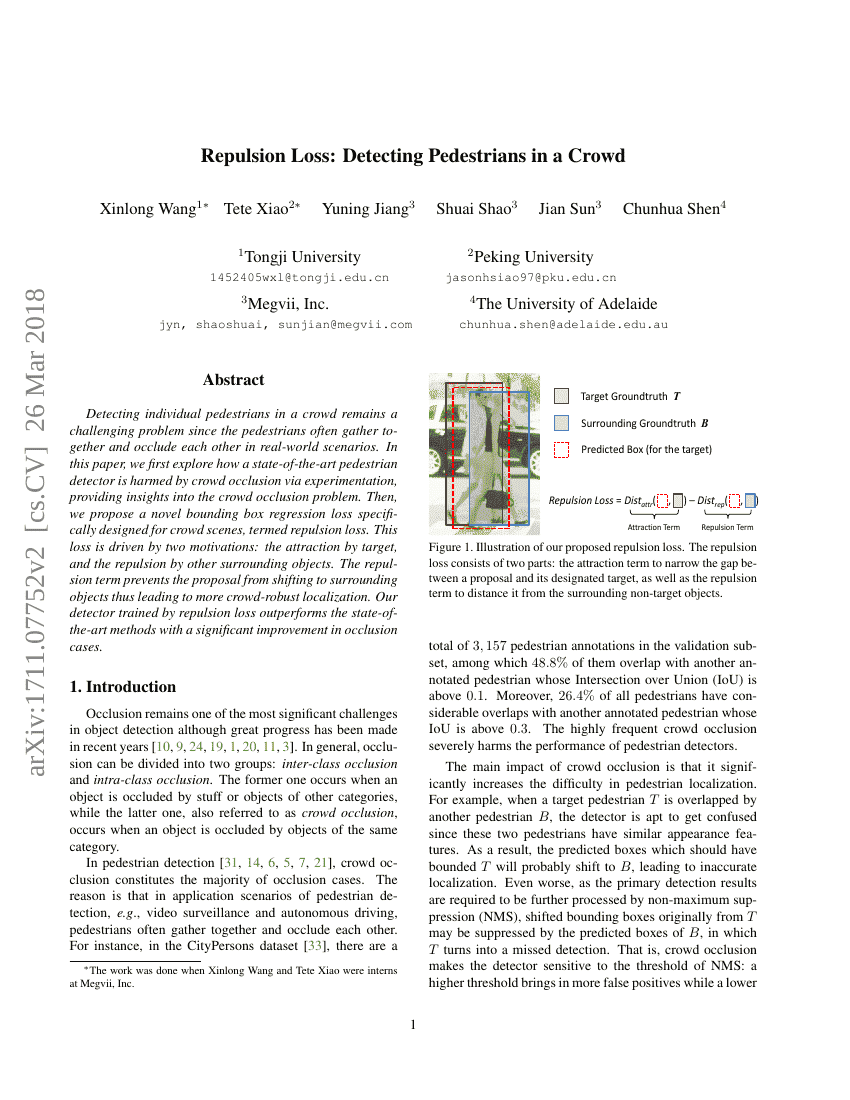Command Palette
Search for a command to run...
Xinlong Wang; Tete Xiao; Yuning Jiang; Shuai Shao; Jian Sun; Chunhua Shen

Abstract
Detecting individual pedestrians in a crowd remains a challenging problem since the pedestrians often gather together and occlude each other in real-world scenarios. In this paper, we first explore how a state-of-the-art pedestrian detector is harmed by crowd occlusion via experimentation, providing insights into the crowd occlusion problem. Then, we propose a novel bounding box regression loss specifically designed for crowd scenes, termed repulsion loss. This loss is driven by two motivations: the attraction by target, and the repulsion by other surrounding objects. The repulsion term prevents the proposal from shifting to surrounding objects thus leading to more crowd-robust localization. Our detector trained by repulsion loss outperforms all the state-of-the-art methods with a significant improvement in occlusion cases.
Code Repositories
Benchmarks
| Benchmark | Methodology | Metrics |
|---|---|---|
| pedestrian-detection-on-caltech | RepLoss + CityPersons dataset | Reasonable Miss Rate: 4.0 |
| pedestrian-detection-on-caltech | RepLoss | Reasonable Miss Rate: 5.0 |
| pedestrian-detection-on-citypersons | RepLoss | Bare MR^-2: 7.6 Heavy MR^-2: 56.9 Partial MR^-2: 16.8 Reasonable MR^-2: 13.2 |
Build AI with AI
From idea to launch — accelerate your AI development with free AI co-coding, out-of-the-box environment and best price of GPUs.